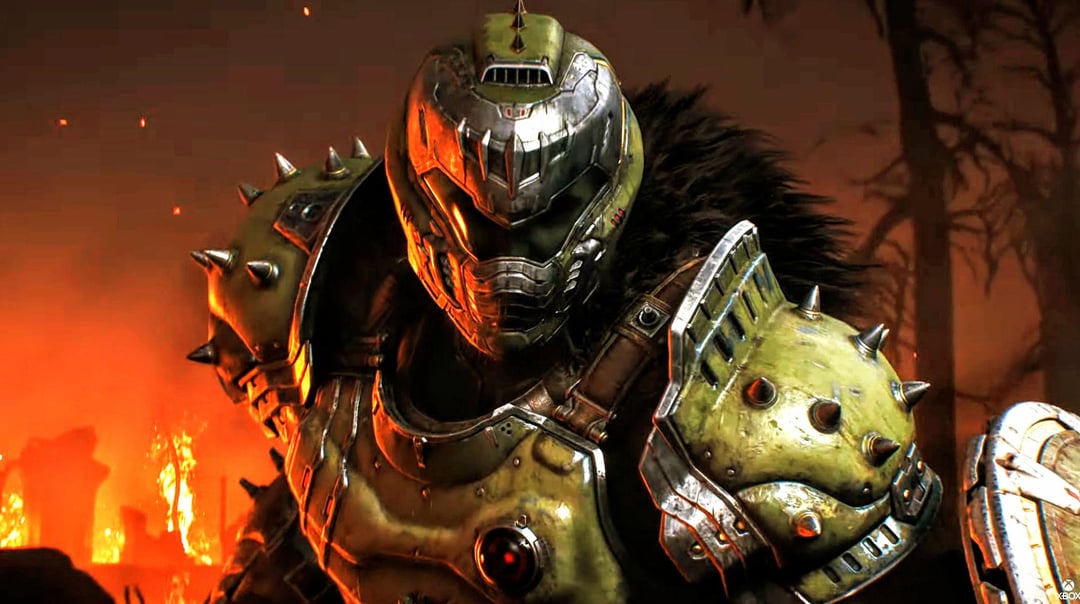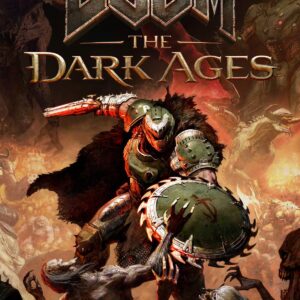The Complete Timeline of the Doom Series: From Doom (1993) to Doom: The Dark Ages (2025)
Few franchises in gaming history have endured like Doom. What began as a blood-pumping first-person shooter in 1993 evolved into an expansive universe of high-tech warfare, hellish invasions, and mythic battles between good and evil.
With Doom: The Dark Ages, id Software has not only added a prequel to the timeline but also deepened the lore of its legendary Slayer.
Let’s take a journey through the chronological events and story beats of the Doom saga.
1. Doom (1993) – The Birth of the Slayer
The original Doom set the template for all that followed. Players assume the role of an unnamed space marine—eventually dubbed the Doomguy—stationed on Mars’ moons, Phobos and Deimos. The Union Aerospace Corporation (UAC) has been experimenting with teleportation using “gateways” that inadvertently open portals to Hell.
- Setting: Mars’ moons, Phobos and Deimos.
- Plot: When demonic forces invade, killing and corrupting UAC personnel, Doomguy fights alone through waves of demonic enemies.
- Key Outcome: Deimos vanishes (it’s now floating over Hell), and Doomguy takes the battle to the demonic realm itself, fighting the Spider Mastermind and Cyberdemon.
The game was a revolution in gameplay, but it also laid the foundation for a larger battle between Earth and Hell.
2. Doom II: Hell on Earth (1994) – The Invasion Hits Home
Doom II continues directly from the first game’s ending. Doomguy returns to Earth only to find that it has also fallen to the demons. Civilization is in ruins. Humanity’s survivors flee the planet via spaceports, which Doomguy defends heroically.
- Setting: Earth.
- Plot: Doomguy fights through cities, military bases, and hellish landscapes on Earth, trying to close the Hell portal.
- Climax: He defeats the Icon of Sin, a massive demonic brain that orchestrated the invasion.
This game solidified Doomguy’s status as Earth’s ultimate protector and led to an extended canon that expanded in both official and unofficial ways over the next few years.
3. Doom 64 (1997) – The Forgotten Bridge
Often overlooked, Doom 64 served as a direct sequel to Doom II. After the events of the Earth invasion, the UAC attempts to destroy all remaining demons with orbital bombardments. But one entity survives—the Mother Demon, who begins resurrecting the armies of Hell.
- Setting: UAC facilities and hellish realms.
- Plot: Doomguy returns to finish the job, tracking the source of the demonic resurgence.
- Ending: Doomguy chooses to stay in Hell forever to ensure no demon ever rises again.
This choice echoes across the canon. It becomes a cornerstone of the Slayer mythos in future games.
4. Doom 3 (2004) – A Rebooted Reality
Doom 3 is a reimagining rather than a direct sequel. It retells the story of UAC’s experiments with teleportation gone wrong but leans heavily into horror elements and story-driven design.
- Setting: Mars and its UAC research base.
- Plot: A new marine uncovers demonic corruption led by Dr. Betruger, who becomes a vessel for Hell.
- Legacy: While not part of the main timeline, Doom 3 influenced the aesthetics and narrative depth of future titles.
5. Doom (2016) – Rebirth of the Doom Slayer
After a long dormancy, the franchise returned with Doom (2016), which serves as both a soft reboot and direct continuation—especially of Doom 64. Doomguy is now the Doom Slayer, a mythic figure locked in a sarcophagus and worshipped by demons for his unparalleled rage and power.
- Setting: Mars, Hell.
- Plot: The UAC, led by Dr. Samuel Hayden, is harvesting Hell’s energy (Argent Energy). The facility is overrun again, prompting the Slayer’s awakening.
- Mythos Introduced: The Night Sentinels, the Crucible, and the Slayer’s mysterious past.
- Key Twist: Doom Slayer was once a human warrior who became something more—nearly godlike—through a mysterious process in Argent D’Nur.
The game rewrote the Slayer’s backstory, adding layers of mythology while retaining the core of Doom—relentless violence and speed.
6. Doom Eternal (2020) – The Slayer Ascends
Doom Eternal expands the lore tenfold. Earth is being consumed by Hell after the Slayer’s disappearance. He returns from the Fortress of Doom, waging war against the corrupted Khan Maykr, demons, and even heaven itself.
- Setting: Earth, Mars, Hell, Sentinel worlds, and the Maykr’s dimension.
- Plot: The Slayer aims to kill the Hell Priests and the Khan Maykr to end Hell’s dominion.
- Major Reveal: Doom Slayer is the original Doomguy, who entered Hell after Doom 64 and was transformed by the Divinity Machine.
- The Father: A godlike being known as The Father is introduced as the true architect of reality, hiding as Samuel Hayden.
- Climax: The Slayer kills the resurrected Dark Lord, revealed to be a mirror of the Slayer himself—a final test. With this act, Hell is thrown into chaos.
Doom Eternal ties all the games together, transforming the Slayer from a soldier into a divine force of wrath.
7. Doom: The Dark Ages (2025) – Origins of a Legend
Announced in 2024 and scheduled for release in 2025, Doom: The Dark Ages is a prequel to Doom (2016) and tells the origin of the Slayer when he was merely a warrior in the realm of Argent D’Nur.
- Setting: A medieval, gothic world full of ancient magic and primitive technology.
- Plot (expected): Players will experience the rise of the Doom Slayer—before his transformation—during the war between humanity and Hell.
- Themes: Brutality, vengeance, and the forging of a myth. The Doom Slayer wields a shield saw and bone-crunching melee weapons, rather than modern guns.
The game is set to explore the relationship between the Slayer and the Night Sentinels, the fall of Argent D’Nur, and how the Slayer came to be revered—and feared—by demons.
A Cohesive Timeline Recap (Chronological Order)
- Doom: The Dark Ages (2025) – Origins of the Slayer.
- Doom 64 (1997) – Slayer chooses eternal war in Hell.
- Doom (2016) – The Slayer awakens in UAC facility.
- Doom Eternal (2020) – Earth invasion, celestial war, Slayer kills the Dark Lord.
- Doom (1993) – Retconned to follow Eternal (loop theory), classic Doomguy’s battles.
- Doom II (1994) – Earth invasion continues.
- Doom 64 (again) – Timeline folds in on itself, reinforcing Eternal’s mythology.
Final Thoughts: Doom as Mythology
From pixelated demon-shooting in 1993 to the high-octane lore of 2025, Doom has transformed from a tech demo of destruction to a dark mythology. The Slayer is no longer just a marine—he is a wrathful force of nature, a cosmic anomaly who will not stop until evil is obliterated.
Doom: The Dark Ages is more than a game—it’s the missing chapter, the mythic prelude. With it, the cycle completes. And begins again.




